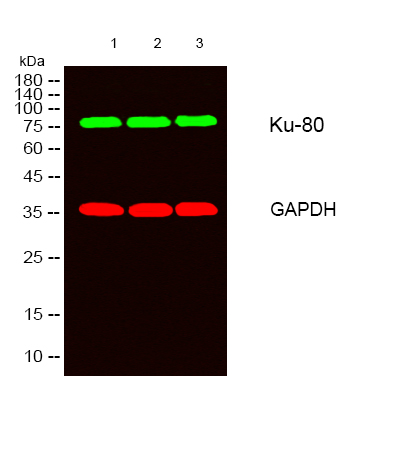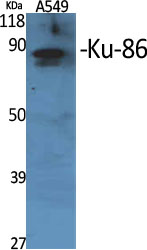CD86 rabbit-FC recombinant protein
- Catalog No.:YD3115
- Reactivity:Human;
- Purity:
- >90% as determined by SDS-PAGE
- Sequence:
- Amino acid:27-247,with rabbit FC tag.
- Formulation:
- Phosphate-buffered solution
- Storage Stability:
- -15°C to -25°C/1 year(Avoid freeze / thaw cycles)
- Other Name:
- T-lymphocyte activation antigen CD86 (Activation B7-2 antigen;B70;BU63;CTLA-4 counter-receptor B7.2;FUN-1;CD antigen CD86)
- Background:
- This gene encodes a type I membrane protein that is a member of the immunoglobulin superfamily. This protein is expressed by antigen-presenting cells, and it is the ligand for two proteins at the cell surface of T cells, CD28 antigen and cytotoxic T-lymphocyte-associated protein 4. Binding of this protein with CD28 antigen is a costimulatory signal for activation of the T-cell. Binding of this protein with cytotoxic T-lymphocyte-associated protein 4 negatively regulates T-cell activation and diminishes the immune response. Alternative splicing results in several transcript variants encoding different isoforms.[provided by RefSeq, May 2011],
- Function:
- function:Receptor involved in the costimulatory signal essential for T-lymphocyte proliferation and interleukin-2 production, by binding CD28 or CTLA-4. May play a critical role in the early events of T-cell activation and costimulation of naive T-cells, such as deciding between immunity and anergy that is made by T-cells within 24 hours after activation. Isoform 2 interferes with the formation of CD86 clusters, and thus acts as a negative regulator of T-cell activation.,online information:CD86 entry,PTM:Polyubiquitinated; which is promoted by MARCH8 and results in endocytosis and lysosomal degradation.,similarity:Contains 1 Ig-like C2-type (immunoglobulin-like) domain.,similarity:Contains 1 Ig-like V-type (immunoglobulin-like) domain.,subunit:Interacts with MARCH8. Interacts with human herpesvirus 8 MIR2 protein (Probable). Interacts with adenovirus subgroup B fiber proteins and acts as
- Subcellular Location:
- Membranous

